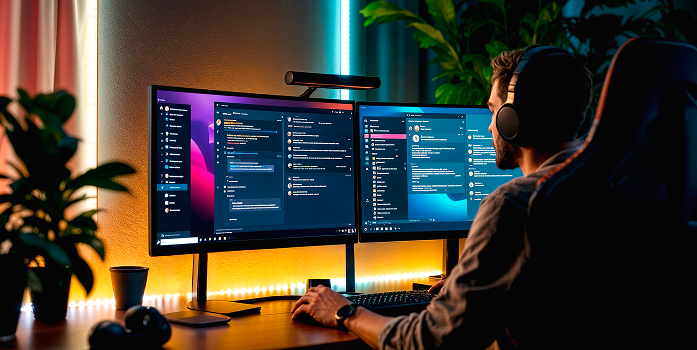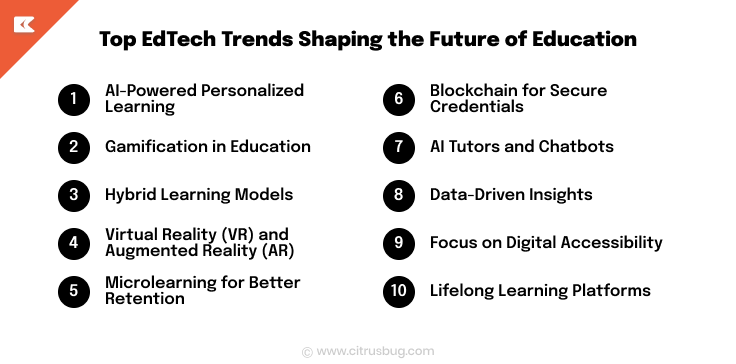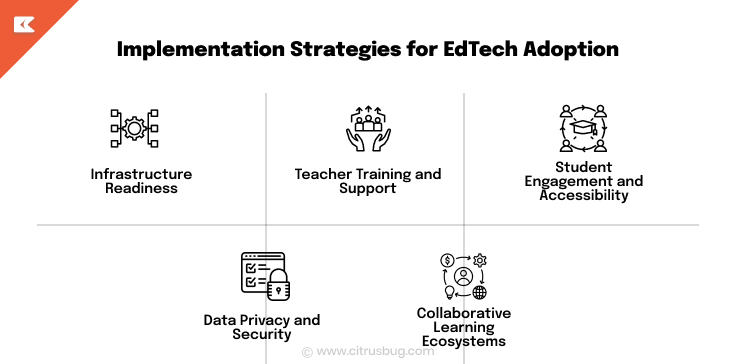Top EdTech Trends to Watch in 2025: Shaping the Future of Education
- December 30, 2024
-
4678 Views
- by Ishan Vyas
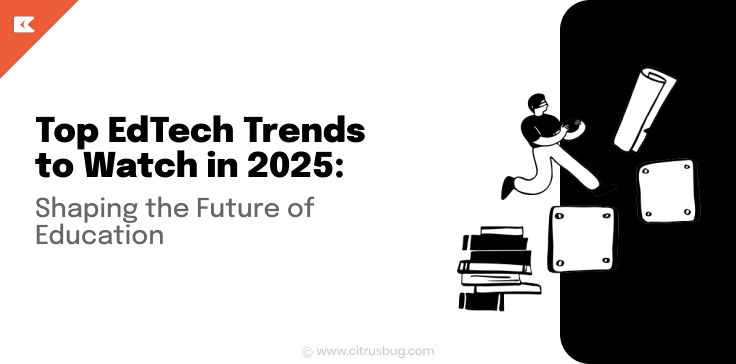
One of the most significant transformations in education is due to the latest technological developments and the necessity of making learning personalized and accessible. Education and technology integration (also called EdTech), as we are stepping into 2025, is reshaping the way teaching and learning are done.
The advances in technology, such as the ability to use AI programs that modify the syllabus according to each learner’s needs, as well as virtual classrooms that allow people from different parts of the world to communicate with each other, are breaking the traditional barriers that set education in place and thus, making new opportunities for learners everywhere.
What is EdTech?
Education technology refers to the use of digital tools, platforms, and systems with the purpose of making learning and teaching better. The digital market has a variety of technologies, including software, hardware, and online platforms. EdTech is strategically redefining the education sector from the most basic classroom tools like digital whiteboards to advanced technologies such as AI and VR. The number of online learners is expected to grow to nearly 60 million people in the near future
The Evolution of EdTech
The advent of edtech has revolutionized the education process and changed it from the use of boards and chalks to more complex digital versions. The rise of personal computers and the internet has stimulated interactive and remote learning, and smartphones have given access to education anytime and anywhere. Currently, technologies like artificial intelligence, virtual reality, and augmented reality are making it possible to have personalized, immersive, and collaborative learning experiences with the availability of such technologies, thereby transforming our teaching and learning aspects. Platforms such as Educative.io have played a huge role in this transformation by offering scalable, on-demand, and practical learning paths for developers and tech learners worldwide.
It’s vital to stay on the pulse and know what emerging trends are shaping this industry in the near future as the global ed-tech market is set to touch over $460 billion by 2026.
Importance of EdTech
Educational technology, or EdTech, plays a crucial role in dealing with the evolving needs of students and teachers. It helps bridge gaps in access to education, enabling students from diverse backgrounds to engage with quality learning resources. Educational technology is advantageous in developing personalized learning, which allows students to move at their own pace and concentrate on the area where they need the most help.
Technology allows educators to simplify administrative tasks, analyze student performance, and deliver improved teaching methods. Technology also encourages collaboration and interaction among students in both real and virtual classes. As flexible and remote learning options are becoming more and more popular, EdTech is making sure that education stays relevant and accessible, hence preparing students for future challenges.
Top 10 EdTech Trends Shaping the Future of Education in 2025
Here are the most important EdTech trends driving innovation and transformation in the education sector in 2025.
1. AI-Powered Personalized Learning
The role of AI is changing the education sector, and it is particularly reflected in personalized learning. This trend brings significant improvements:
- Customized Curriculum: Tools like DreamBox and Squirrel AI analyze the performance of students in real time and then alter the content according to individual needs.
- Automated Assessments: AI facilitates quicker feedback through automated grading systems.
- Enhanced Accessibility: Language processing AI supports students with different learning abilities.
- Duolingo as a Case Study: Duolingo is an app that is not only the best language-learning app but also one that leverages AI to create a specific learning journey for users. The program dynamically modifies the difficulty level of the lessons depending on the user. For instance, if a learner struggles with verb conjugations, at that point, Duolingo would supply them with extra exercises. Its AI also uses game strategies such as daily streaks and rewards to keep learners motivated and engaged with the material.
Research and Markets reported that the global AI in education market would rise at a CAGR of 40.29% from 2022 and 2027, owning to the use of AI in various applications.
2. Gamification in Education
Gamification incredibly gives an abstract and fun theme to the learning process with the help of visual graphics, sounds, movement, and others:
- Points and Rewards: Tools like Kahoot! and Quizizz are fun ways to enhance language skills, which involve motivational activities, receiving points, and getting more attention from students.
- Interactive Assessments: The transformation of the test into a fun competition makes the students more involved and also reduces the stress that always comes with traditional assessments.
- Collaborative Games: Cooperative games for adults are fabulously effective in promoting learning and communication skills. Moreover, the whole process is one of the best means of developing teamwork, as in the case of students. It is the most effective process for enhancing language skills among learners.
Gamification continues to dominate current EdTech trends due to its proven ability to boost student motivation and long-term engagement. The research by TalentLMS found that 89% of the learners felt more motivated when learning through gamified platforms.
3. Hybrid Learning Models
Hybrid learning is a mode of education that combines both online and offline communication for flexibility in learning:
- Asynchronous Learning: The recorded lectures will allow learners to study and access them at any time that is suitable for them, which in return will be beneficial for the learners who can learn at their own pace.
- Classroom Interaction: The face-to-face sessions ensure personal guidance and active participation.
- Technology Integration: Microsoft Teams has been found to simplify the management of hybrid classrooms.
According to UNESCO, in 2023, 70% of educational institutions had used the hybrid model, and the number is continuously increasing.
4. Virtual Reality (VR) and Augmented Reality (AR)
The use of these tools in education is reshaping experiential learning:
- Virtual Field Trips: With the use of VR, students can travel back in time to ancient sites and cultural heritage; this way, they learn a new way of understanding the world without leaving the classroom.
- Hands-On Practice: AR creates virtual environments where medical and engineering students can gain expertise in a controlled cybernetic environment instead of risky real-world simulations.
- Enhanced Engagement: Abstract concepts are visualized in a simple, concrete way through interactive visualizations. Students find it easier to understand complex topics.
As one of the most immersive EdTech trends, VR/AR helps students grasp complex topics through realistic and engaging simulations. By 2025, the global AR and VR in education market is expected to reach $20 billion.
5. Microlearning for Better Retention
Microlearning provides content in a short, direct, and focused manner, letting the students accumulate information in a short period of time.
- Bite-Sized Lessons: The aim of these lessons is to make the teaching process enjoyable and ensure that the students can comprehend the subject in a short period of time.
- Mobile Accessibility: Users can easily get to the point of learning by making things easier on smart mobile devices from anywhere. It is a breeze with mobile apps that are both user-friendly and educational.
- Higher Retention Rates: The short duration of lessons helps in maintaining focus, ultimately improving long-term memory retention.
Studies suggest that microlearning boosts focus and retention rates by 17%, emphasizing its effectiveness in education.
6. Blockchain for Secure Credentials
Blockchain technology is very useful in academic records because it is a robust solution that provides transparency and security. Its features address key challenges like tampering, verification, and accessibility:
- Immutable Records: Blockchain keeps any diploma or certificate proofs from getting faked or edited, which in turn authenticates and boosts trust.
- Streamlined Verification: Through this, employers can easily and quickly confirm the credentials of a candidate.
- Global Accessibility: Students and institutions can access their academic records effortlessly, regardless of their location.
For example, the University of Nicosia uses blockchain to issue digital diplomas.
7. AI Tutors and Chatbots
AI tutors and chatbots have transformed the war we learn by assisting beyond traditional classroom hours:
- 24/7 Availability: Students are now able to get immediate help from AI tools despite the limitations that exist with time and distance.
- Resource Recommendations: These are the systems that analyze the needs of students and suggest relevant study materials, which, in turn, will allow for extra and personalized ways of learning.
- Progress Tracking: AI tracks individual performance, identifies the students who require the most help, and directs them to personalized feedback and strategies for improvement based on their progress.
The future of AI chatbots is promising, with the education market set to skyrocket, with estimates predicting a global increase of approximately $21 billion by 2028. Tools like ChatGPT and Quizlet’s AI-powered tutors are already shaping the future of personalized and accessible education.
8. Data-Driven Insights
Modern analytics tools are transforming the education sector by granting educators the opportunity to evaluate strategies using evidence.
- Performance Dashboards: Through these tools, teachers are given a complete overview with clear data on student performance. This enables them to keep track of students’ progress and to identify the areas that may need improvement.
- Personalized Strategies: Analytics can be one of the powerful tools for educators to pinpoint the specific concerns of students or groups that should be paid attention to and given necessary help.
- Trend Analysis: By identifying recurring challenges and improvement areas, analytics help proactively address classroom issues.
Platforms like Tableau and Power BI are widely used in schools to visualize and analyze academic performance trends, fostering a culture of informed and effective teaching strategies.
9. Focus on Digital Accessibility
Inclusive technologies play a vital role in ensuring education is accessible to everyone, regardless of their abilities.
- Assistive Tools: Features, e.g., the presence of screen readers and smartphones that are able to take instructions by voice, make the learning process even for students with visual, auditory, or physical impairments.
- Multilingual Content: Online platforms allow learning in many languages, with content specifically for the same diverse worldwide end-users being made available.
- Customizable Interfaces: Personalization options such as adjustable font sizes, high-contrast themes, and user-friendly navigation make websites improve usability for all.
The World Bank states that 15% of the global population lives with disabilities, highlighting the importance of accessible edtech solutions.
10. Lifelong Learning Platforms
Lifelong learning platforms have transformed the education world by providing the space for lifelong education for people of any age. This space allows individuals to enjoy the life-enhancing skills within and also to keep up with the pace of the changing professional demands:
- Skill-Based Courses: Renowned platforms such as Coursera present a huge number of certification programs that allow learners to gain industry-recognized qualifications in specialized fields. Many learners are now also exploring an AI marketing course to stay ahead in the evolving digital marketing field.
- Job-Oriented Training: The proposed courses are well planned and match the current market needs. In 2025, technical courses such as DevOps Course is the one which results in learners finding skills that can help them in their jobs.
- Flexible Learning Paths: Students can emphasize one of their extra-curricular activities in their courses or may even take up a course in this field that corresponds with their specific interests and career goals.
In 2025, more institutions will partner with platforms like Coursera and edX to provide lifelong learning solutions. According to a report by Times of India, the online education market in India is expected to grow by US$ 2.28 billion between 2021 and 2025, with an impressive CAGR of almost 20%.)
Implementation Strategies for EdTech Adoption
1. Infrastructure Readiness
Ensuring schools have the necessary hardware, software, and internet access so that technology can be successful in the EdTech implementation. For example, Google’s products like Chromebook have helped significantly support schools by providing cost-effective devices that integrate seamlessly with cloud-based tools.
2. Teacher Training and Support
For EdTech trends to succeed in real-world classrooms, educators play a vital role and must receive ongoing training and support. Educators who undergo such professional development and continuous support are enabled to effectively employ EdTech tools. Microsoft Educator Center’s training programs stand as an excellent model of empowering educators with the knowledge and skills they need.
3. Student Engagement and Accessibility
EdTech must be inclusive of all learners in order to be successful, including disabled ones. Features like screen readers and closed captions, available on platforms like Coursera, enhance accessibility and ensure that every student can participate in the learning process.
4. Data Privacy and Security
With more and more usage of digital tools, taking care of student data is critical. Adherence to regulations such as GDPR and choosing secure platforms are crucial steps. For example, Zoom has introduced the strongest privacy measures ever to address concerns around data security in educational settings, especially as more EdTech trends depend on cloud-based tools and real-time analytics.
5. Collaborative Learning Ecosystems
Modern education includes collaboration as a key element. Using Padlet and Google Workspace for Education to perform group tasks, including peer interactions, makes the learning process more suitable for today’s participative and intriguing environment. Tools like an online whiteboard for teams also help students and educators brainstorm, plan lessons, and collaborate visually in real time, making group activities more structured and engaging.
Conclusion
The world of education is continually refreshing to take advantage of EdTech trends, which are leading technologies in teaching us through innovation. This blog has explored diverse trends that have a significant influence on education, such as personalized learning driven by AI, gamification, VR/AR technology, etc., and even the rise of blockchain in secure credentials. Additionally, we discussed the practical steps to be taken, which include infrastructure tailoring, teacher training, accessibility programs, data safety strategies, and collaborative learning ecosystems.
As educators, institutions, and governments, we must adopt these new technologies. Education technology services can help bridge gaps, address marginalization, and provide tailored solutions to ensure access to quality education for all. These developments cover not only some initial problems of the marginalization of students and access restriction but also enable students to acquire knowledge so they can be ready for tomorrow, which is a part of everything.
The journey ahead is promising. Technology in the classroom can make teaching all around the world democratic, making sure that every person, no matter the place or the ability, the way to a quality education is open to them. We can create a future-ready learning environment if each of us is active and well-informed in attempting to transform the present educational system.
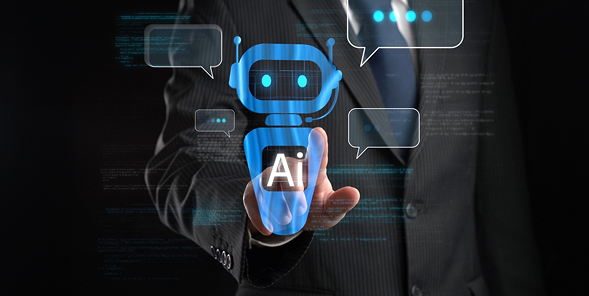


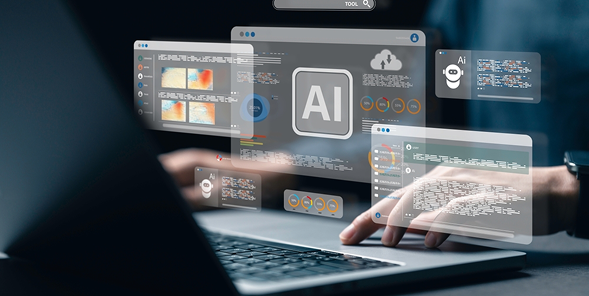

 SaaS Development
SaaS Development Web Application Development
Web Application Development Mobile Application Development
Mobile Application Development Custom Software Development
Custom Software Development Cloud Development
Cloud Development DevOps Development
DevOps Development MVP Development
MVP Development Digital Product Development
Digital Product Development Hire Chatbot Developers
Hire Chatbot Developers Hire Python Developers
Hire Python Developers Hire Django Developers
Hire Django Developers Hire ReactJS Developers
Hire ReactJS Developers Hire AngularJS Developers
Hire AngularJS Developers Hire VueJS Developers
Hire VueJS Developers Hire Full Stack Developers
Hire Full Stack Developers Hire Back End Developers
Hire Back End Developers Hire Front End Developers
Hire Front End Developers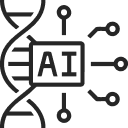 AI Healthcare Software Development & Consulting
AI Healthcare Software Development & Consulting Healthcare App Development
Healthcare App Development EHR Software Development
EHR Software Development Healthcare AI Chatbot Development
Healthcare AI Chatbot Development Telemedicine App Development Company
Telemedicine App Development Company Medical Billing Software Development
Medical Billing Software Development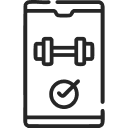 Fitness App Development
Fitness App Development RPM Software Development
RPM Software Development Medicine Delivery App Development
Medicine Delivery App Development Medical Device Software Development
Medical Device Software Development Patient Engagement Software Solutions
Patient Engagement Software Solutions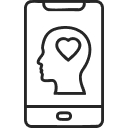 Mental Health App Development
Mental Health App Development Healthcare IT Consulting
Healthcare IT Consulting Healthcare CRM Software Development
Healthcare CRM Software Development Healthcare IT Managed Services
Healthcare IT Managed Services Healthcare Software Testing services
Healthcare Software Testing services Medical Practice Management Software
Medical Practice Management Software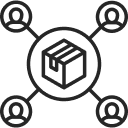 Outsourcing Healthcare IT Services
Outsourcing Healthcare IT Services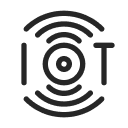 IoT Solutions for Healthcare
IoT Solutions for Healthcare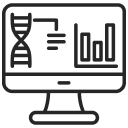 Medical Image Analysis Software Development Services
Medical Image Analysis Software Development Services Lending Software Development Services
Lending Software Development Services Payment Gateway Software Development
Payment Gateway Software Development Accounting Software Development
Accounting Software Development AI-Driven Banking App Development
AI-Driven Banking App Development Insurance Software Development
Insurance Software Development Finance Software Development
Finance Software Development Loan Management Software Development
Loan Management Software Development Decentralized Finance Development Services
Decentralized Finance Development Services eWallet App Development
eWallet App Development Payment App Development
Payment App Development Money Transfer App Development
Money Transfer App Development Mortgage Software Development
Mortgage Software Development Insurance Fraud Detection Software Development
Insurance Fraud Detection Software Development Wealth Management Software Development
Wealth Management Software Development Cryptocurrency Exchange Platform Development
Cryptocurrency Exchange Platform Development Neobank App Development
Neobank App Development Stock Trading App Development
Stock Trading App Development AML software Development
AML software Development Web3 Wallet Development
Web3 Wallet Development Robo-Advisor App Development
Robo-Advisor App Development Supply Chain Management Software Development
Supply Chain Management Software Development Fleet Management Software Development
Fleet Management Software Development Warehouse Management Software Development
Warehouse Management Software Development LMS Development
LMS Development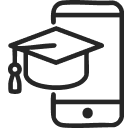 Education App Development
Education App Development Inventory Management Software Development
Inventory Management Software Development Property Management Software Development
Property Management Software Development Real Estate CRM Software Development
Real Estate CRM Software Development Real Estate Document Management Software
Real Estate Document Management Software Construction App Development
Construction App Development Construction ERP Software Development
Construction ERP Software Development
